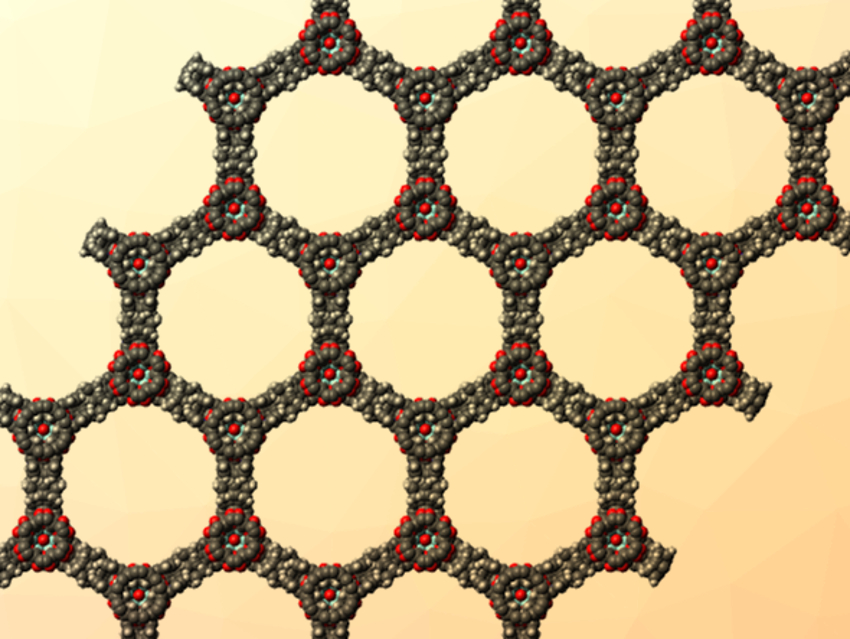Metal–organic frameworks (MOFs) are composed of metal centers and organic ligands as linkers. They can be useful, e.g., in catalysis or gas separation. Porphyrinoid compounds such as corroles are important ligands in chemistry and biochemistry. However, there had been no corrole-based MOFs so far.
Shengqian Ma, University of South Florida, Tampa, USA, and colleagues have synthesized two robust corrole-based MOFs for the first time. The MOFs are M6(μ3-O)4(μ3-OH)4(OH)3(H2O)3(H3TCPC)3 (M = Zr, Hf ; H3TCPC = 5,10,15-tris(p-carboxylphenyl)corrole). They consist of a specially designed corrole with three carboxylate groups and either Zr6- or Hf6-oxo clusters. The MOFs were prepared from either ZrCl4 or HfCl4, H3TCPC, and benzoic acid in N,N-dimethylformamide (DMF).
In the framework, the oxo clusters have a rare nine-fold connectivity, while each corrole binds to three partners. This leads to networks with hexagonal, one-dimensional open channels (pictured). The MOFs are chemically stable in aqueous solutions within a wide pH range.
- Robust Corrole-Based Metal–Organic Frameworks with Rare 9-Connected Zr/Hf-Oxo Clusters,
Yanming Zhao, Shibo Qi, Zheng Niu, Yunlei Peng, Chuan Shan, Gaurav Verma, Lukasz Wojtas, Zhenjie Zhang, Bao Zhang, Yaqing Feng, Yu-Sheng Chen, Shengqian Ma,
J. Am. Chem. Soc. 2019.
https://doi.org/10.1021/jacs.9b07700



